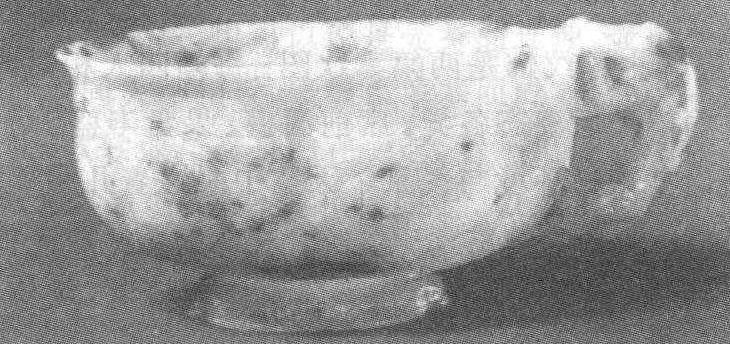玉龙把碗
宋代仿古玉器。高七点三厘米,口径十四厘米。用上等白玉精琢而成。器体呈六瓣海棠花形,侈口,深腹,圈足外撇。器的一侧有一玲珑剔透的螭把,螭首略高于碗口,前两爪紧握沿口,后两爪伏于碗壁,螭弓背张爪,一副欲上爬憨态。口沿部饰连续的三角形几何纹,口沿下有一周凸起的宽弦纹,内填环环相扣的回纹。器外壁每一瓣各有一组花纹,在回纹地上琢隐起变形的菱凤纹。玉龙把碗既有商代流行的装饰花纹,又有唐宋器皿的造型特征。此器是“唐创新,宋仿古”的作品,是玉器的珍品。现被北京故宫博物院收藏。

玉龙把碗
| 词条 | 玉龙把碗 |
| 类别 | 中文百科知识 |
| 释义 | 玉龙把碗宋代仿古玉器。高七点三厘米,口径十四厘米。用上等白玉精琢而成。器体呈六瓣海棠花形,侈口,深腹,圈足外撇。器的一侧有一玲珑剔透的螭把,螭首略高于碗口,前两爪紧握沿口,后两爪伏于碗壁,螭弓背张爪,一副欲上爬憨态。口沿部饰连续的三角形几何纹,口沿下有一周凸起的宽弦纹,内填环环相扣的回纹。器外壁每一瓣各有一组花纹,在回纹地上琢隐起变形的菱凤纹。玉龙把碗既有商代流行的装饰花纹,又有唐宋器皿的造型特征。此器是“唐创新,宋仿古”的作品,是玉器的珍品。现被北京故宫博物院收藏。
玉龙把碗 |
| 随便看 |
开放百科全书收录579518条英语、德语、日语等多语种百科知识,基本涵盖了大多数领域的百科知识,是一部内容自由、开放的电子版国际百科全书。